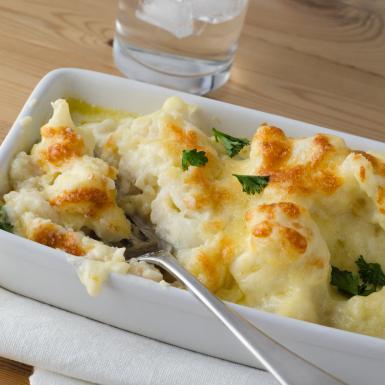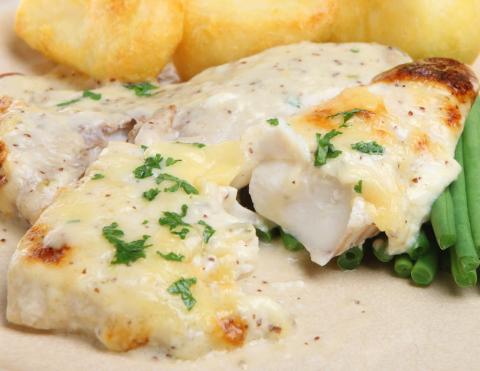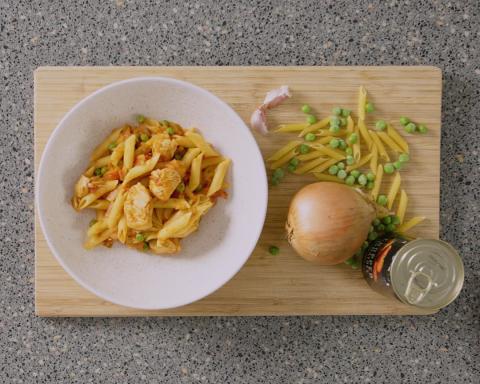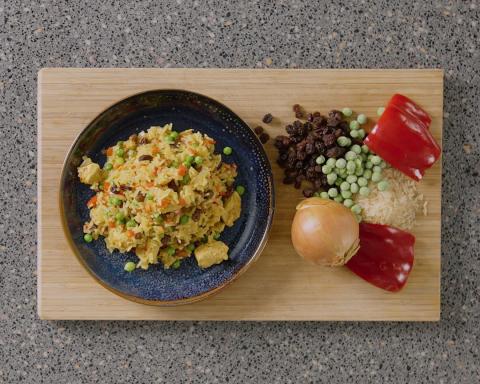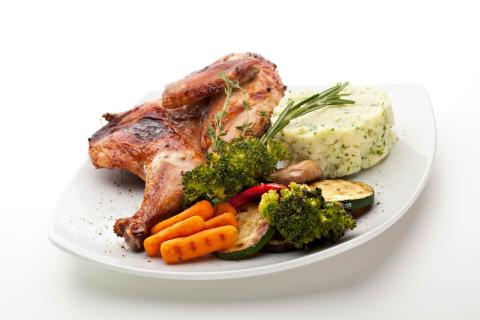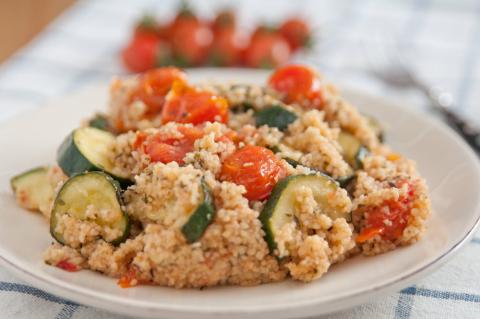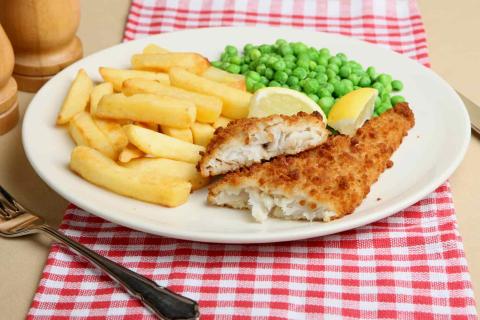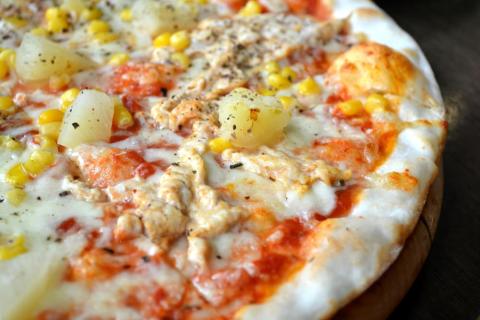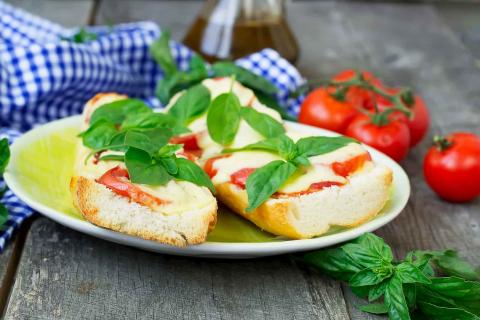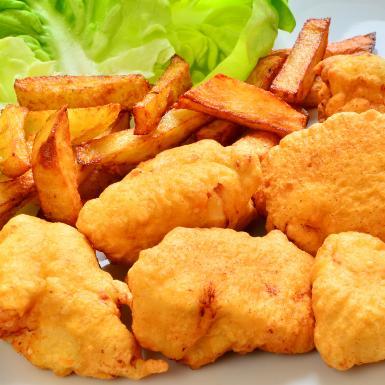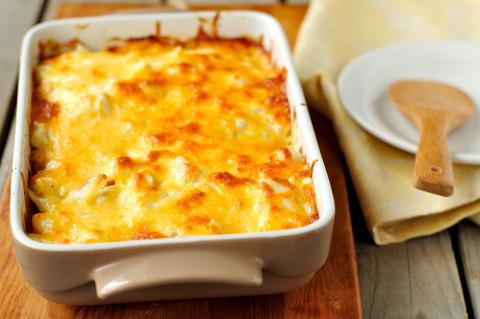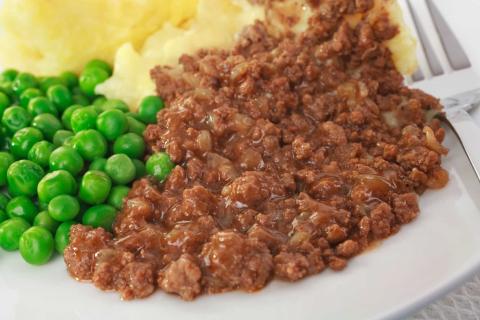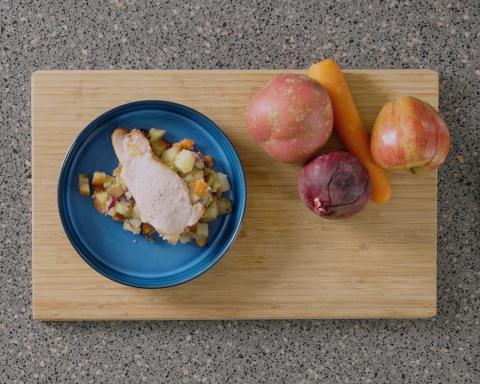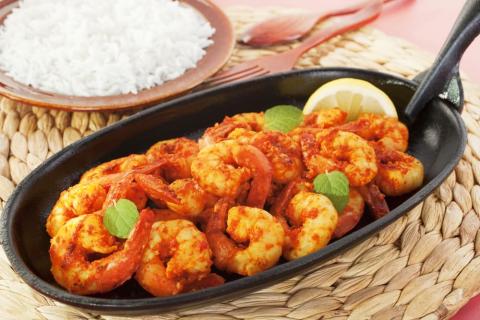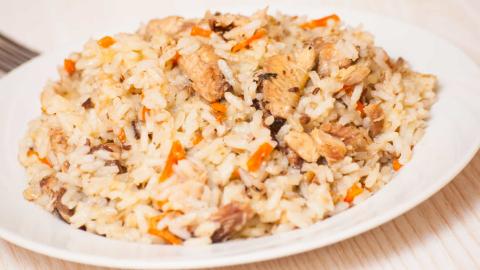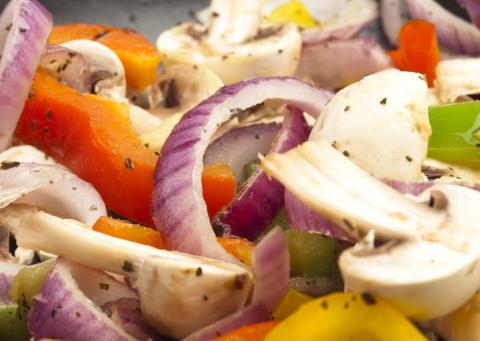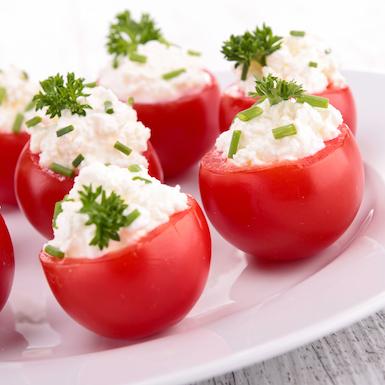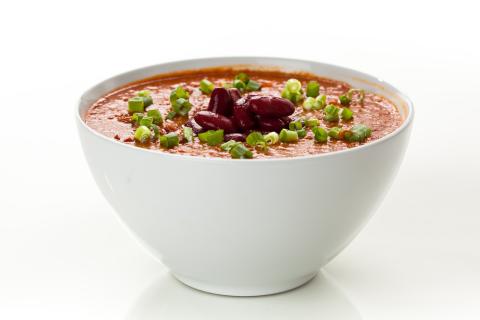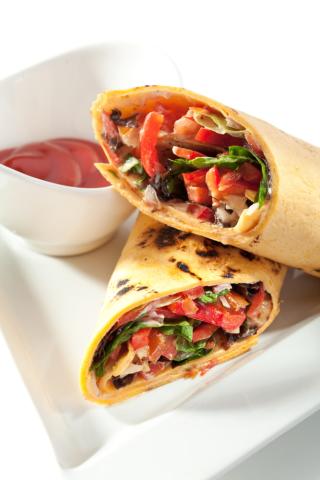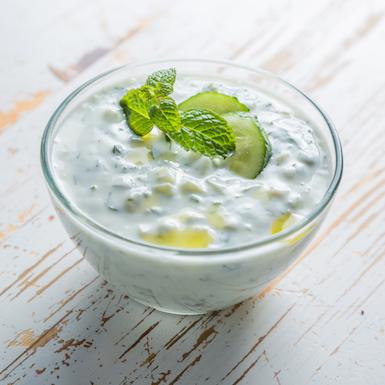- 1 Tablespoon (10g) Vegetable Oil
- 1 Medium Sized (150g) Onion
- 3 Medium Sized (240g) Carrots
- 3 Medium Sized (240g) Parsnips
- 2 (6g) Garlic Cloves
- 1 (7g) Chicken Or Vegetable Reduced Salt Stock Cube
- 1 For The Stock Cube Pint (500ml) Water
- 1 Tin (400g) Chopped Tomatoes
- ¼ Pint (150ml) Water
- 1 Tin (400g) Chickpeas In Unsalted Water
- 15 Thin Slices (300g) Leftover Cooked Turkey
- 2 Teaspoons (2g) Dried Coriander
- ¾ Pack (400g) Couscous
Ingredients
Allergy Disclaimer
Always check the label of each ingredient for allergy warnings.
Method
- Peel and slice onion, carrots, parsnips and garlic.
- Heat oil in a large saucepan then add onion, carrots and parsnips for 5 minutes and then garlic for a further 1 minute.
- Dissolve stock cube in boiling water and add to pan with the tomatoes and chickpeas (drained).
- Bring to the boil and then simmer for 25-30 minutes.
- If the pieces of turkey are large you may want to cut. Add turkey to the pan with coriander. Heat for a further 5 minutes adding extra water if becoming too thick.
- Meanwhile cook the cous cous as per manufacturers' instructions and serve with the tagine.
Time Saver Tips
Make in advance, then reheat and add the turkey when required.
Cost Saver Tips
You could try this with other leftover meats or even just on its own.
Tips for Kids
Let them help to prepare the vegetables.
Nutritional Information
Based on a single serving of 686g (% of an adult's reference intake)
Energy
652 kcals ( 33 %)
2,737 kJ ( 33 %)
Fat
2.1 g ( 11 %)
Saturates
104.3 g ( %)
Sugar
13.7 g ( 15 %)
Salt
0.7 g ( 11 %)
Detailed nutritional information
| Per 100g | Per 686g serving | |
|---|---|---|
| Energy Kcals | 95 | 652 |
| Energy Kj | 399 | 2,737 |
| Protein | 6.8 g | 46.6 g |
| Total Fat | g | g |
| Saturated Fat | 0.3 g | 2.1 g |
| Carbohydrates | 15.2 g | 104.3 g |
| Total Sugars | 2 g | 13.7 g |
| NSP Fibre | 1.5 g | 10.3 g |
| Sodium | 53 mg | 364 mg |
| Salt | 0.1 g | 0.7 g |
Find out about nutritional labelling
Nutrition labels on the front of packaging
- Most of the big supermarkets and many food manufacturers display nutritional information on the front of pre-packed food.
- Front of pack nutrition labels provide information on the number of grams of fat, saturated fat, sugars and salt and the amount of energy (in kJ and kcal) in a serving or portion of a recipe.
- The labels also include information about reference intakes (expressed as a percentage) which are guidelines about the approximate amount of particular nutrients and energy required for a healthy diet.
- The colour coding tells you at a glance if the food has high (red), medium (amber) or low (green) amounts of fat, saturated fat, sugars and salt.
- The more greens on the label, the healthier the choice
- Amber means neither high nor low, so you can eat foods with all or mostly ambers on the label most of the time.
- Reds on the label means the food is high in that nutrient and these are the foods we should cut down on. Try to eat these foods less often and in small amounts.
Food shopping tips
If you’re trying to decide which product to choose, check to see if there's a nutrition label on the front of the pack. This will help you to quickly assess how your choices stack up. You will often find a mixture of red, amber and green colour coding for the nutrients. So when you're choosing between similar products, try to go for more greens and ambers and fewer reds if you want to make a healthier choice.
 Activities & Play
Activities & Play Behaviour
Behaviour Childcare
Childcare Development & Growing Up
Development & Growing Up Family, Friends & Relationships
Family, Friends & Relationships Feeding Your Baby
Feeding Your Baby Food & Eating
Food & Eating Health & Safety
Health & Safety Mental Health & Wellbeing
Mental Health & Wellbeing Money & Work
Money & Work Online Behaviour & Safety
Online Behaviour & Safety Pregnancy & First Days
Pregnancy & First Days School & Education
School & Education Sleep
Sleep













